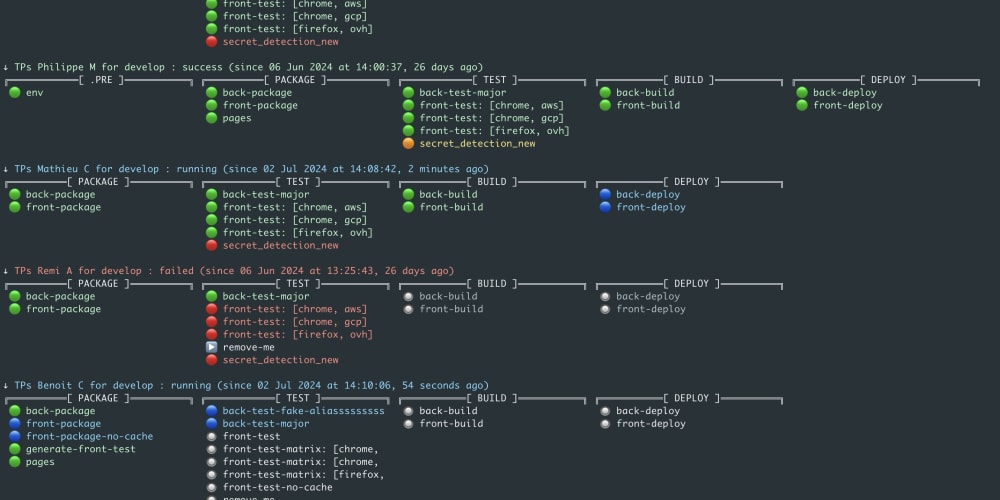When building a design system, choosing the right tool to manage styles and variants is crucial for maintainability and scalability. Two popular libraries that help manage CSS styles in modern applications are CVA (Class Variance Authority) and Tailwind Variants. This blog post will compare these tools, highlighting their features, advantages, and use cases to help you decide which is best for your project.
Overview
CVA (Class Variance Authority)
CVA is a utility for managing CSS classes and variants in a consistent and scalable way. It provides a straightforward API to define and apply class variants, making it easier to handle different states of components.
Tailwind Variants
Tailwind Variants extends TailwindCSS with a first-class variant API, enhancing the utility-first approach of TailwindCSS. It simplifies managing responsive design, component states, and variant configurations, especially when working with complex components.
Feature Comparison
| Feature | Tailwind Variants | CVA |
|---|---|---|
| Variants API | ✅ | ✅ |
| Framework agnostic | ✅ | ✅ |
| Responsive Variants | ✅ | ❌ |
| Split components (slots) | ✅ | ❌ |
| Slots with responsive variants | ✅ | ❌ |
| Compound slots | ✅ | ❌ |
| Overrides components | ✅ | ✅ |
| Components composition (extend) | ✅ | ❌ |
| Great DX (autocomplete types) | ✅ | ✅ |
| Needs TailwindCSS to work | ✅ | ❌ |
| Conflicts resolution | ✅ | ❌ |
Why Choose Tailwind Variants?
1. Responsive Variants
Tailwind Variants supports responsive variants, allowing you to define styles for different screen sizes without duplicating code. This feature is essential for creating responsive designs that adapt seamlessly to various devices.
const button = tv(
{
base: 'font-semibold text-white py-1 px-3 rounded-full active:opacity-80',
variants: {
color: {
primary: 'bg-blue-500 hover:bg-blue-700',
secondary: 'bg-purple-500 hover:bg-purple-700',
},
},
},
{
responsiveVariants: ['xs', 'sm', 'md'],
}
);
2. Split Components (Slots)
Tailwind Variants allows you to split components into multiple parts (slots), making it easier to manage and style individual sections. This approach promotes better component organization and readability.
const card = tv({
slots: {
base: 'flex flex-col',
header: 'bg-gray-100 p-4',
body: 'p-4',
footer: 'bg-gray-100 p-4',
},
});
3. Compound Slots
With compound slots, you can apply styles to multiple slots simultaneously, reducing redundancy and ensuring consistency across your components.
const pagination = tv({
slots: {
base: 'flex gap-1',
item: 'p-2',
prev: 'p-2',
next: 'p-2',
},
compoundSlots: [
{
slots: ['item', 'prev', 'next'],
class: 'bg-gray-200 hover:bg-gray-300',
},
],
});
4. Overrides and Composition
Tailwind Variants supports overriding styles and composing components, allowing you to create reusable and customizable components that fit your design system's needs.
Why Choose CVA?
1. Simplicity and Flexibility
CVA provides a simple and flexible API for managing CSS classes and variants, making it easy to handle different component states without the need for additional setup or dependencies.
import { cva } from 'class-variance-authority';
const button = cva('font-semibold rounded', {
variants: {
color: {
primary: 'bg-blue-500 text-white',
secondary: 'bg-purple-500 text-white',
},
size: {
sm: 'text-sm px-2',
md: 'text-md px-4',
lg: 'text-lg px-6',
},
},
defaultVariants: {
color: 'primary',
size: 'md',
},
});
2. Framework Agnostic
CVA is framework agnostic and does not require TailwindCSS, making it suitable for projects that use other CSS frameworks or vanilla CSS.
Conclusion
Both CVA and Tailwind Variants offer powerful features for managing CSS styles and variants in your design system. Your choice will depend on your project's specific needs and the tools you are already using.
- Choose Tailwind Variants if you are already using TailwindCSS and need robust support for responsive design, split components, and compound slots.
- Choose CVA if you need a simple, flexible, and framework-agnostic solution for managing CSS classes and variants.
By understanding the strengths and features of each tool, you can make an informed decision and build a maintainable and scalable design system for your application. Happy coding!


















